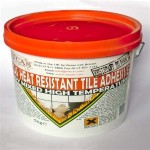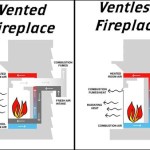How to Turn a Wood Burning Fireplace Into Gas
Converting a wood-burning fireplace into a gas fireplace is a popular home improvement project. It offers the convenience of instant flames, consistent heat, and reduced mess compared to traditional wood-burning options. The project involves several steps, from assessing the existing fireplace to installing the gas components and ensuring proper ventilation. This article outlines the process for converting a wood-burning fireplace to gas, providing detailed instructions and considerations for a successful conversion.
Before embarking on the conversion, it's crucial to determine whether the project is feasible and permitted in the homeowner's location. Factors that influence the feasibility include the fireplace's existing structure, the availability of a gas line, and local building codes and regulations. Researching these aspects upfront can prevent unexpected delays and ensure compliance with legal requirements.
Assessing the Existing Fireplace and Gas Line Availability
The first step involves a thorough inspection of the existing wood-burning fireplace. This includes evaluating the firebox's condition for cracks, damage, or structural weaknesses. Any necessary repairs must be completed before proceeding with the conversion. Additionally, the chimney should be examined to ensure it is clean, structurally sound, and free from obstructions. A professional chimney sweep is recommended for this inspection and cleaning process. The size and dimensions of the firebox are also critical, as they determine the appropriate size and type of gas insert or log set that can be installed.
The availability of a gas line is another crucial factor. If a gas line is not already present near the fireplace, one must be installed. This often requires hiring a qualified plumber or gas fitter. The plumber will assess the existing gas supply system, determine the appropriate gas line size for the fireplace, and run a new gas line to the fireplace location. The installation must adhere to local gas codes and safety regulations. Considerations include the distance from the main gas meter, the required BTU output for the gas fireplace, and the need for shut-off valves and pressure regulators.
If a gas line already exists, it's essential to verify its size and BTU capacity to ensure it can adequately supply the new gas fireplace. Incorrectly sized gas lines can lead to insufficient gas pressure, resulting in poor flame performance and potential safety hazards. A gas pressure test should be performed by a qualified professional to confirm the gas line provides the necessary pressure and volume.
Choosing the Right Gas Fireplace Insert or Log Set
Once the fireplace and gas line have been assessed, the next step is selecting the appropriate gas fireplace insert or log set. Gas fireplace inserts are self-contained units that fit directly into the existing firebox. They typically include a sealed combustion chamber, a glass front, and a vent system. Gas log sets, on the other hand, are designed to mimic the appearance of a traditional wood-burning fire. They consist of ceramic logs arranged over a gas burner. Gas log sets can be vented or ventless, each offering different benefits and drawbacks.
Several factors influence the choice between a gas fireplace insert and a gas log set. These include the desired heating efficiency, aesthetic preferences, and budget. Gas fireplace inserts generally offer higher heating efficiency as they are designed to maximize heat output and minimize heat loss. They also provide a more modern and finished look. Gas log sets, on the other hand, offer a more traditional and rustic appearance. They are typically less expensive than gas fireplace inserts, but may not provide the same level of heating efficiency.
Vented gas log sets require a functioning chimney to vent combustion gases, similar to a wood-burning fireplace. Ventless gas log sets, also known as vent-free gas log sets, do not require a chimney or vent. They burn more efficiently and release heat directly into the room. However, ventless gas logs produce small amounts of carbon monoxide and water vapor, so it's crucial to ensure adequate ventilation in the room and install a carbon monoxide detector. Ventless gas logs are often subject to stricter local regulations and may not be permitted in all areas.
Choosing the right size gas fireplace insert or log set is also important. The dimensions of the firebox should be carefully measured to ensure the insert or log set fits properly. An oversized insert or log set can be difficult to install and may not function correctly. An undersized insert or log set may not provide sufficient heat output. The BTU rating of the gas fireplace insert or log set should be appropriate for the size of the room. A higher BTU rating is needed for larger rooms or rooms with poor insulation.
Installation and Safety Considerations
The installation process varies depending on whether a gas fireplace insert or gas log set is being installed. Gas fireplace inserts typically require more extensive installation, including connecting the unit to the gas line, installing a vent system, and sealing the insert into the firebox. Gas log sets are generally easier to install, as they simply need to be placed in the firebox and connected to the gas line.
It is strongly recommended that a qualified professional, such as a licensed plumber or gas fitter, perform the gas line connection and any necessary modifications to the gas supply system. Improper gas line connections can lead to gas leaks and explosions. The professional should also test the gas line for leaks after the installation is complete. All gas connections should be made in accordance with local gas codes and safety regulations.
When installing a gas fireplace insert, it's crucial to follow the manufacturer's instructions carefully. This includes ensuring proper venting, sealing the insert to prevent drafts, and verifying the unit is properly grounded. The vent system should be inspected to ensure it is properly connected and free from obstructions. A professional chimney sweep may be needed to install or inspect the vent system.
For gas log sets, the logs should be arranged according to the manufacturer's instructions. Incorrectly arranged logs can impede airflow and affect the burner's performance. The gas burner should be cleaned regularly to prevent clogs and ensure proper flame distribution. It's also important to keep combustible materials, such as curtains and furniture, away from the fireplace to prevent fire hazards.
Safety is paramount when converting a wood-burning fireplace to gas. A carbon monoxide detector should be installed in the room where the gas fireplace is located. Carbon monoxide is a colorless and odorless gas that can be deadly. The carbon monoxide detector should be tested regularly to ensure it is functioning properly. A smoke detector should also be installed in the vicinity of the fireplace. Regular maintenance, including cleaning the burner and inspecting the vent system, is essential for safe operation.
In summary, converting a wood-burning fireplace to gas is a complex project that requires careful planning, assessment, and installation. The feasibility of the conversion depends on factors such as the existing fireplace's condition, gas line availability, and local regulations. Choosing the right gas fireplace insert or log set is crucial for achieving the desired heating efficiency and aesthetic appeal. Proper installation by a qualified professional and adherence to safety guidelines are essential for preventing gas leaks, carbon monoxide poisoning, and other hazards. By following these steps and considerations, homeowners can successfully convert their wood-burning fireplace to gas and enjoy the convenience and benefits of a gas fireplace.
Converting A Wood Burning Fireplace Into Gas Heat Glo

Convert From Wood To Gas With A Insert The Kernel Burner
Can I Convert My Wood Burning Fireplace To Gas Woodlanddirect Com

How To Convert Your Wood Burning Fireplace Electric Or Gas
Can I Convert My Wood Burning Fireplace To Gas Woodlanddirect Com

Can A Wood Burning Fireplace Be Converted To Gas The Flame Company

Convert A Wood Fireplace To Gas Full Service Chimney

Convert A Gas Or Wood Fireplace To An Electric

Want To Convert Gas Wood Fireplace Full Service Chimney

Diy Fireplace Makeover How To Convert A Wood Burning An Touchstone Home S Inc








